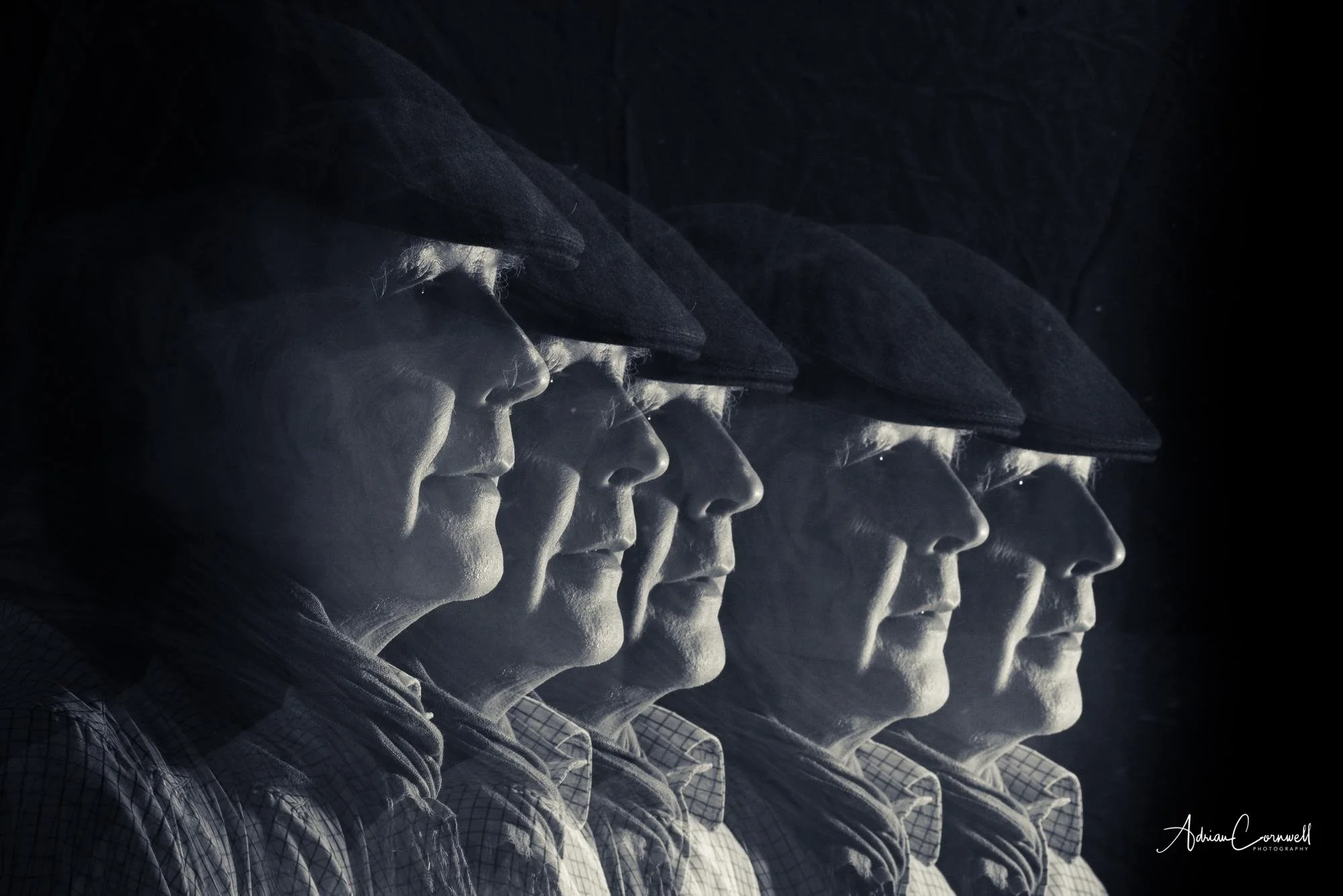How to do Multiple Exposure photography
Multiple Exposures are a great way to add creativity to your photos and can help you tell a story or convey an emotion in a single image. With digital cameras, it is easy to shoot multiple exposures without wasting film.
Multiple exposure photography is all about experimentation, so do not be afraid to try new things and see what works best for you.
It’s a fun and easy way to experiment with photography.
Camera Settings
Most modern digital camera's have a blend mode used to merge the images
Dark - Merges just the darker parts of the shots
Light - Merges the lighter parts of the shots
Avg - Merges the images based on average lighting
Add - Just Merges the images (This is same as multiple exposures with a film camera)
Number of Exposures - I normally use 2, but you can use as many as you like
You can switch lenses between shots and adjust exposure etc (depends a bit on your camera)
If using Add/Average/Light Modes then you may need to underexpose your shot (by cutting the exposure in half for 2 exposures), This will mean that the double exposure shots equal out to a fully exposed image.
It's possible your camera takes this into account automatically, otherwise use the histogram to check the result.
Mistakes …
I've found that the key point on multiple exposures is to get your composition correct. Just taking random shots will probably be a bit of a mess, like this one
Some examples and ideas…
This Multiple Exposure Shot (2) of an office building was taken by rotating the camera 90 degrees between shots.
I used Dark Merge Mode and did not need to adjust the exposure between shots as the lighting was unchanged.
This Multiple Exposure shot of a riverside scene was taken with 2 shots. The first was a standard scene shot, The second shot was pointing at the river to catch the reflection and I rotated the camera 180 degrees.
I needed to adjust the exposure slightly between the shots as the river was darker than than the buildings and sky.
In this shot I combined Multiple Exposure and ICM (Interntional Camera Movement)
I jerked the camera down a bit on the first shot to get the blur and held it steady for the second shot.
I used the ADD mode on the camera as wanted the blown out effect caused by the slight overexposure.
This shot was taken with the camera mounted on a tripod. Technically I used one shot (a very long exposure), using a card in front of the camera to mimic multuiple exposures.
To see more on this technique see my blog on “How to Shoot Fireworks Photography”
Playing with myself here. A timer based shot from a tripod mounted camera using 5 exposures.
Multiple Exposure photography is a great way to try out creative ideas…









